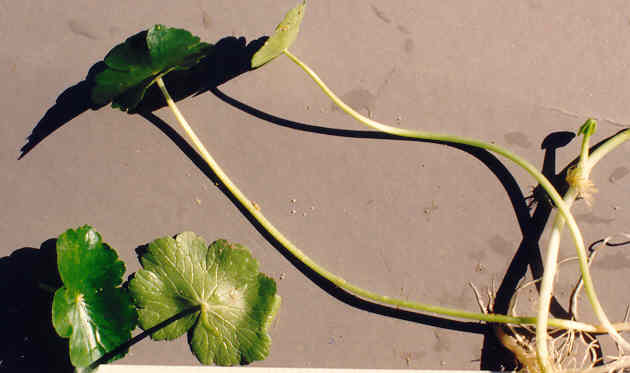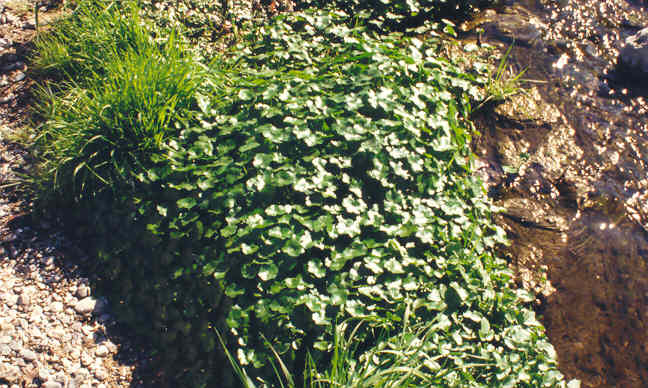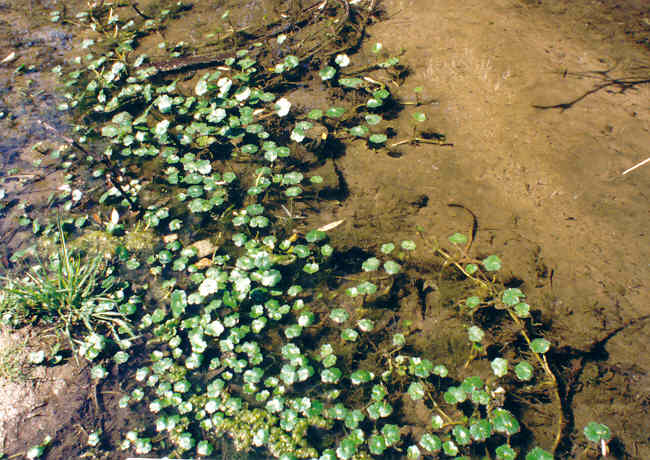
Hydrocotyle ranunculoides L.f.
Apiaceae (Carrot Family)
Native
Floating Marsh-pennywort
 |
Hydrocotyle ranunculoides L.f.Apiaceae (Carrot Family)Native
Floating Marsh-pennywort
|
May Photo
Plant Characteristics:
Low perennial with slender rootstocks,
floating or creeping on mud; lvs. 0.5-8 cm. broad, round-reniform with cordate
base, 3-7 cleft with crenate lobes, petioles 5-35 cm. long; peduncles shorter,
recurved in fr.; umbels simple, capitate, 5-10 fld.; pedicels 1-3 mm. long; fr.
suborbicular, 2-3 mm. long, elliptic to round, with thick pericarp and 5 obscure
filiform ribs.
Habitat:
Ponds and slow streams, below 5000 ft.; many Plant Communities;
cismontane Calif. and desert edge; to Wash., Penn., S. Am. Eu.
March-Aug.
Name:
Greek, hudor, water and cotule, a low vessel or cup. (Munz,
Flora So. Calif. 76).
Water-cup. (Abrams, Vol. III
217). Latin, rana,
dim. ranunculus, a frog or pertaining
to frogs. Possibly the plant grows
in a place where frogs are also present. (my
comment). John Johnson has
suggested that ranunculoides means
like or resembling the genus Ranunculus.
Hydrocotyle ranunculoides
resembles Ranunculus cymbalaria var.
saximontanus and has the same
water habitat.
General:
Uncommon in the study area and not found at all prior to 1996 when it was
found in the stream bed at 23rd St. Three
colonies were found at that time and the beginnings of these probably came from
Cherry Lake above. (my comments).
The Cahuilla Indians of the Colorado Desert, the San Bernardino and San
Jacinto Mountains, likely used Hydrocotyle spp. as greens.
(Campbell 141).
About 75 species, widely distributed.
(Munz, Flora So. Calif 76).
Text Ref:
Abrams, Vol. III 218, Hickman, Ed. 148; Mason 627; Munz, Flora So. Calif. 77.
Photo Ref:
Jan-Mar 96 # 28A
Identity: by R. De Ruff,
confirmed by John Johnson.
First Found: March 1996.
Computer Ref: Plant Data 493.
Have plant specimen.
Last edit. 7/4/05.
 |
 |
March Photo May Photo